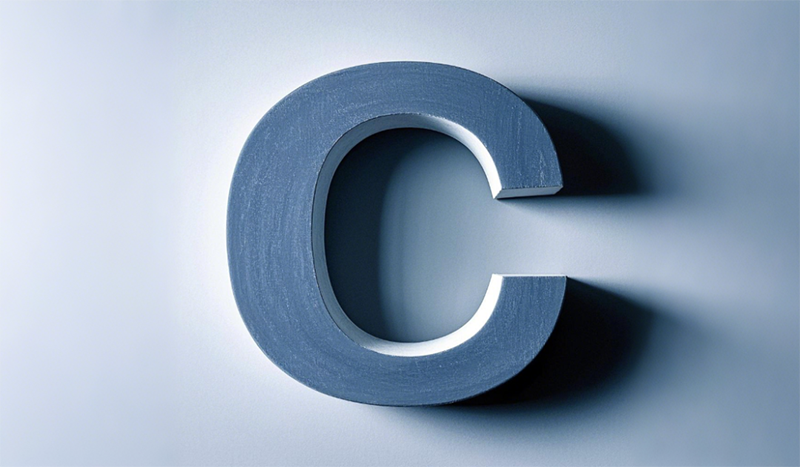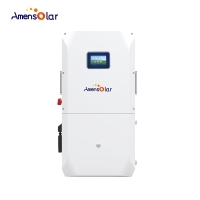A Deep Dive into Battery C-Rate: The Performance Key of Amensolar Energy Storage Lithium Batteries
Battery C-rate is a crucial parameter that measures the speed of battery charging and discharging. It significantly impacts the performance, lifespan, and application scenarios of Amensolar energy storage lithium batteries. This article explores the definition of C-rate, its impact on performance, and how to select the appropriate C-rate for different applications.
I. Definition and Calculation of C-Rate
The C-rate is a quantitative indicator of the battery's charging and discharging rate. It is calculated as:

For example, a 48V lithium-ion battery with a capacity of 200Ah from Amensolar has a C-rate of 1C when discharging at 200A, meaning it can discharge its full capacity in one hour. If it discharges at 40A, the C-rate is 0.2C, and it will take five hours to fully discharge.
II. Impact of C-Rate on Battery PerformanceA. Discharging Performance
A. Discharging Performance
High C-Rate Discharging:
- Advantages: Provides high power output for instantaneous high-energy demands, such as grid frequency regulation.
- Disadvantages:Increases internal resistance and heat generation, potentially reducing energy efficiency and lifespan.
Low C-Rate Discharging:
- Advantages: Ensures stable operation with minimal heat generation and longer lifespan.
- Disadvantages:Lower power output, unsuitable for high-power demands.
B. Charging Performance
High C-Rate Charging:
- Advantages:Enables fast charging, suitable for scenarios requiring rapid energy replenishment.
- Disadvantages: Intensifies battery polarization and heat generation, potentially reducing lifespan.
Low C-Rate Charging:
- Advantages:Gentle charging process with minimal impact on lifespan and high safety.
- Disadvantages:Longer charging time, unsuitable for fast-charging needs.
C. Battery Lifespan
High C-Rate Charging and Discharging:
- Accelerates aging, leading to capacity decay and increased internal resistance.
- Frequent high C-rate operations significantly shorten battery lifespan.
Low C-Rate Charging and Discharging:
- Extends battery lifespan, ideal for applications with high lifespan requirements.

III. C-Rate Selection for Amensolar Energy Storage Lithium Batteries
A. Low C-Rate (<1C)
Suitable for applications requiring stable, long-term power supply, such as solar energy storage systems. For example, a 48V 200Ah battery operating at 0.2C (40A) can discharge over five hours, ensuring stable power output with minimal heat generation and extended lifespan.
B. Medium C-Rate (1C - 5C)
Balances power output and lifespan, suitable for home energy storage and small commercial applications. For instance, a 10kWh battery discharging at 1C (10kW) can meet peak power demands efficiently.
C. High C-Rate (>5C)
Ideal for rapid response scenarios like grid frequency regulation. A 15kWh battery discharging at 5C (75kW) can provide high power output quickly, though it requires advanced battery management to ensure safety and longevity.

IV. Conclusion
C-rate is a key factor in determining the performance and lifespan of energy storage lithium batteries. Amensolar must select the appropriate C-rate based on specific application needs and optimize battery design and management to balance performance, lifespan, and safety. As technology advances, high C-rate batteries will play a more significant role in various applications, driving the progress of energy storage technology and supporting energy transition.

 N3H-X16US 16KW | Split Phase |...
N3H-X16US 16KW | Split Phase |...  N3H-X12US 12KW | Split Phase |...
N3H-X12US 12KW | Split Phase |...  N3H-X10US 10KW | Split Phase |...
N3H-X10US 10KW | Split Phase |...  N3H-X8US 8KW | Split Phase | ...
N3H-X8US 8KW | Split Phase | ...  N3H-X5US 5KW | Split Phase | ...
N3H-X5US 5KW | Split Phase | ...  N1F-A3US 3KW | Split Phase | ...
N1F-A3US 3KW | Split Phase | ...  N1F-A12US 12KW | Split Phase |...
N1F-A12US 12KW | Split Phase |...  N1F-A6.2P 6.2KW | Single Phase...
N1F-A6.2P 6.2KW | Single Phase...  N1F-A6.2E 6.2KW | Single Phase...
N1F-A6.2E 6.2KW | Single Phase...  AMF16000 51.2V | 16KWH | Floo...
AMF16000 51.2V | 16KWH | Floo...  AMW10240 51.2V | 10.24KWH | W...
AMW10240 51.2V | 10.24KWH | W...  LFP 16kWh / LV 51.2V | 16KWH | Floo...
LFP 16kWh / LV 51.2V | 16KWH | Floo...  S52300 51.2V | 16KWH | Stac...
S52300 51.2V | 16KWH | Stac...  S52200 51.2V | 10.24KWH | S...
S52200 51.2V | 10.24KWH | S...  AML12-200 12.8V Series LifePo4...
AML12-200 12.8V Series LifePo4...  AML12-100 12.8V Series LifePo4...
AML12-100 12.8V Series LifePo4...  AML12-120 12.8V Series LifePo4...
AML12-120 12.8V Series LifePo4...  AML12-150 12.8V Series LifePo4...
AML12-150 12.8V Series LifePo4... 